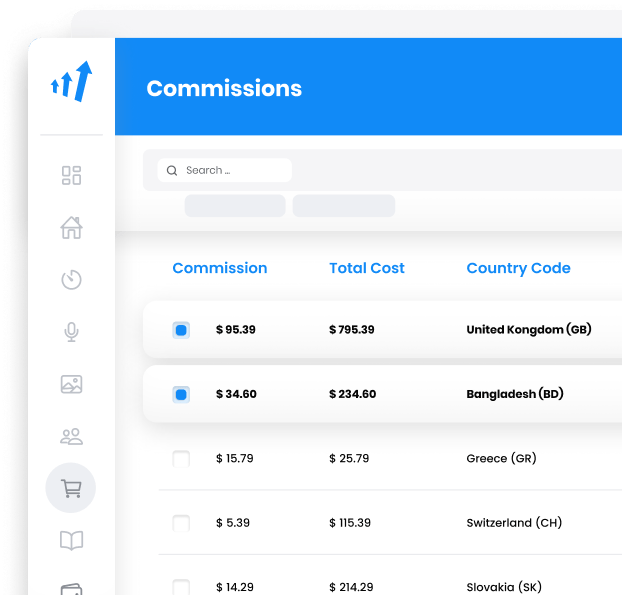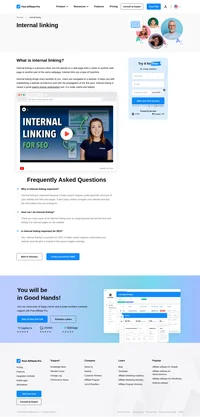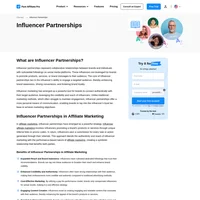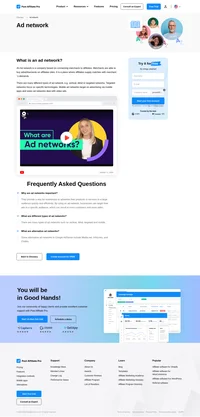What is a syndication?
Syndication is the strategic process of distributing content from a single source to multiple third-party platforms or networks. This method involves the republishing of existing content, such as articles, videos, or other media formats, to reach a wider audience. The distribution can be executed either for free or as part of a paid strategy, depending on the goals and resources of the content owner.
In the context of affiliate marketing, syndication is a pivotal technique used to enhance the visibility of content, thereby increasing the potential for click-throughs to affiliate links embedded within the syndicated material. This process is crucial for affiliate marketers aiming to expand their reach beyond their immediate audience, boost brand visibility, and drive more traffic to their affiliate offers.

Detailed Aspects of Syndication in Affiliate Marketing
Content Selection
Effective content selection is essential for successful syndication. Not all content is suitable for syndication; hence, affiliates should focus on content that is evergreen—content that remains relevant over time and provides substantial value to a broad audience. This includes in-depth guides, product reviews, and how-to articles, which are more likely to resonate with a wider audience and generate ongoing traffic.
Syndication Partnerships
Developing partnerships with reputable websites and platforms is fundamental for successful content syndication. These partnerships should align with the affiliate’s niche to ensure the content reaches an audience interested in the promoted products or services. For instance, a tech affiliate might partner with a gadget review blog to target an audience interested in technology products.
Content Formatting and Compliance
When syndicating content, it is imperative to format it according to the guidelines of the syndicating site, which may require adjusting the layout, length, or style. Additionally, it is crucial to comply with legal and ethical standards, ensuring that all syndication is done with proper permissions and attribution to the original content creators.
SEO Considerations
Search engines like Google differentiate between duplicate and syndicated content. To avoid penalties, affiliates should include canonical tags when syndicating content. Canonical tags inform search engines about the original version of the content, preserving its SEO value and preventing duplicate content issues.
Tracking and Analytics
Utilizing tracking tools to monitor the performance of syndicated content is vital. Affiliates should analyze metrics such as click-through rates and conversions to assess the effectiveness of their syndication strategy and make informed adjustments as needed.
Content Syndication Tools and Platforms
Various tools and platforms are available for content syndication, ranging from free options like Medium and LinkedIn to paid services such as Outbrain and Taboola. These platforms can assist affiliates in distributing their content across a vast network of sites, thereby expanding their reach and engagement.
Benefits of Content Syndication for Affiliates
Extended Reach
Syndication allows affiliates to reach a broader audience by distributing content across various platforms. This increased exposure can lead to more traffic and higher conversion rates for affiliate offers.
Cost-Effectiveness
Compared to other marketing strategies, syndication is a cost-effective way to gain exposure. It leverages existing networks and platforms, reducing the need for expensive advertising campaigns.
Authority Building
Regular syndication of high-quality content helps establish the affiliate as an authority within their niche. This credibility can enhance trust with the audience, leading to increased affiliate conversions.
Improved SEO and Backlinks
Syndicated content often results in backlinks from reputable sites, which are crucial for improving search engine rankings. Higher rankings lead to more organic traffic and potential leads.
Lead Generation and Brand Awareness
By reaching new audiences, content syndication can enhance brand awareness and generate leads. Affiliates can tap into new demographics that may not have been accessible through their own platforms, thus broadening their customer base.
Content Syndication Strategies
Free Syndication
Affiliates may opt for free syndication by partnering with platforms that do not charge for republishing. This method involves identifying and reaching out to sites that align with the affiliate’s niche and audience.
Paid Syndication
Paid syndication involves utilizing platforms like Outbrain and Taboola to distribute content as sponsored posts. While this option requires a budget, it allows affiliates to target specific demographics and achieve broader reach quickly.
Self-Syndication
Affiliates can also independently syndicate their content by leveraging their own networks and social media channels. This method allows for complete control over the syndication process and is often more cost-effective.
Avoiding Duplicate Content Issues
To prevent duplicate content issues, affiliates should ensure that syndicated content includes a link back to the original source. Additionally, using canonical tags and adjusting headlines, metadata, and primary images can help differentiate syndicated content from the original.
Frequently Asked Questions
What is syndication in digital marketing?
In digital marketing, syndication is the process of distributing content to third-party sites that will re-publish it. This is often done in order to increase the reach and visibility of the content.
What are examples of syndication?
Some examples of syndication include broadcast syndication, web syndication, search syndication, and print syndication.
What is syndication in SEO?
Syndication can be beneficial for SEO because it can increase the amount of backlinks, boost interested traffic to your site, and maximize brand awareness.
Discover the power of targeted marketing with Post Affiliate Pro. Learn how to effectively segment your clientele into specific groups to attract new business, increase sales, and optimize your marketing efforts. Save time and resources by understanding the unique needs of each customer segment. Explore more on our comprehensive glossary page.
Discover the essentials of ad networks and their pivotal role in connecting merchants with affiliates. Learn about various types of ad networks like vertical, blind, or targeted networks, and explore their benefits in enhancing your digital advertising strategy. Watch our video for insights on choosing the right ad network to maximize income and audience reach.










